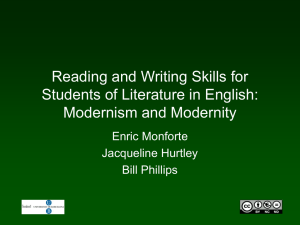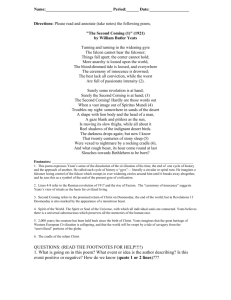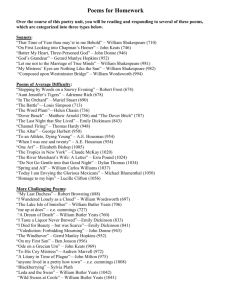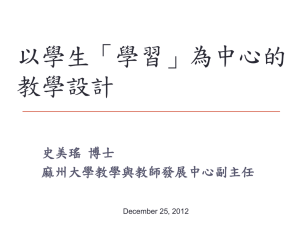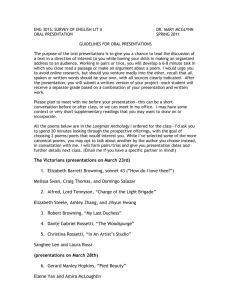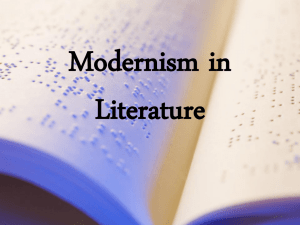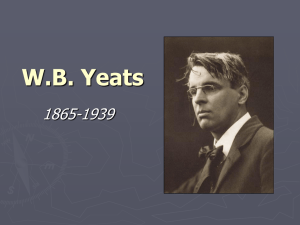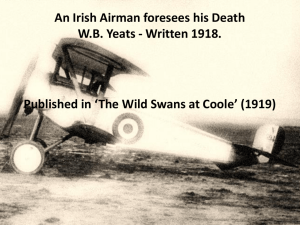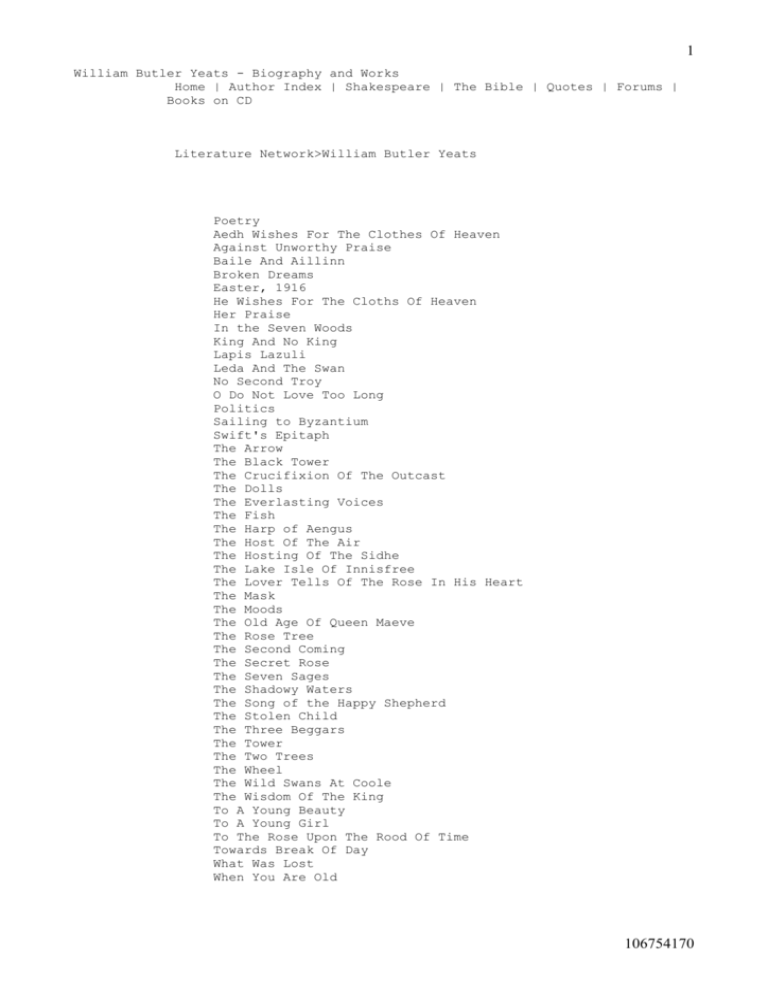
1
William Butler Yeats - Biography and Works
Home | Author Index | Shakespeare | The Bible | Quotes | Forums |
Books on CD
Literature Network>William Butler Yeats
Poetry
Aedh Wishes For The Clothes Of Heaven
Against Unworthy Praise
Baile And Aillinn
Broken Dreams
Easter, 1916
He Wishes For The Cloths Of Heaven
Her Praise
In the Seven Woods
King And No King
Lapis Lazuli
Leda And The Swan
No Second Troy
O Do Not Love Too Long
Politics
Sailing to Byzantium
Swift's Epitaph
The Arrow
The Black Tower
The Crucifixion Of The Outcast
The Dolls
The Everlasting Voices
The Fish
The Harp of Aengus
The Host Of The Air
The Hosting Of The Sidhe
The Lake Isle Of Innisfree
The Lover Tells Of The Rose In His Heart
The Mask
The Moods
The Old Age Of Queen Maeve
The Rose Tree
The Second Coming
The Secret Rose
The Seven Sages
The Shadowy Waters
The Song of the Happy Shepherd
The Stolen Child
The Three Beggars
The Tower
The Two Trees
The Wheel
The Wild Swans At Coole
The Wisdom Of The King
To A Young Beauty
To A Young Girl
To The Rose Upon The Rood Of Time
Towards Break Of Day
What Was Lost
When You Are Old
106754170
2
William Butler Yeats
Search all of William Butler Yeats:
Irish poet, dramatist and prose writer, one of the greatest
English-language poets of the 20th century. Yeats received the
Nobel Prize for Literature in 1923. Between the Celtic dreams
of THE WANDERINGS OF OISIN (1889) and the intellectual, often
obscure poetry of the 1930s, Yeats produced a tremendous
amount of works. In his early career Yeats studied William
Blake's poems, Emanuel Swedenborg's writings and other
visionaries, but later he began to confront reality with a new
directness - and disillusionment. Central theme in Yeats's
poems is Ireland, its history, folklore and contemporary
public life.
William Butler Yeats was born in Dublin. His father was a
lawyer turned to an Irish Pre-Raphaelite painter. In 1867 the
family followed him to London and settled in Bedford Park. In
1881 they returned to Dublin, where Yeats studied the
Metropolitan School of Art. He met there the poet, dramatist
and painter George Russell (1867-1935), who was interested in
mysticism.
Reincarnation, communication with the dead, mediums,
supernatural systems and Oriental mysticism fascinated Yeats
through his life. In 1886 Yeats formed the Dublin Lodge of the
Hermetic Society and took the magical name Daemon est Deus
Inversus. The occult order also attracted Aleister Crowley.
As a writer Yeats made his debut in 1885, when he published
his first poems in The Dublin University Review. In 1887 the
family returned to Bedford Park, and Yeats devoted himself to
writing. He visited Mme Blavatsky, the famous occultist, and
joined the Esoteric Section of the Theosophical Society, but
was later asked to resign. In 1889 Yeats met his great love,
Maud Gonne (1866-1953), an an actress and Irish revolutionary
who became a major landmark in the poets life and imagination.
However, she married in 1903 Major John MacBride, and this
episode inspired Yeats's poem 'No Second Troy'. "Why, what
could she have done being what she is? / Was there another
Troy for her to burn." MacBride was later executed by the
British.
Yeats was interested in folktales as a part of an exploration
of national heritage and for the revival of Celtic identity.
His study with George Russell and Douglas Hyde of Irish
legends and tales was published in 1888 under the name Fairy
and Folk Tales of the Irish Peasantry. Yeats assembled for
children a less detailed version, IRIS FAIRY TALES, which
appeared in 1892. (see also Wilhelm Grimm.) THE WANDERINGS OF
OISIN AND OTHER POEMS (1889), filled with sad longings, took
its subject from Irish mythology.
In 1896 Yeats returned to live permanently in his home
country. He reformed Irish Literary Society, and then the
National Literary Society in Dublin, which aimed to promote
the New Irish Library. In 1897 he met Isabella Augusta, Lady
Gregory, with whom he founded the Irish Literary Theatre.
106754170
3
Yeats worked as a director of the theatre to the end of his
life, writing several plays for it. His most famous dramas
were CATHLEEN NI HOULIHAN (1902) and THE LAND OF HEART'S
DESIRE (1894).
Ezra Pound, whom Yeats met in 1912, became his fencing master
and secretary in the winters of 1913 and 1914. Pound
introduced Yeats to Japanese Noah drama, which inspired his
plays. In early 1917 Yeats bought Thoor Ballyle, a derelict
Norman stone tower near Coole Park. After restoring it, the
tower became his summer home and central symbol in his later
poetry. In 1917 he married Georgie Hyde-Lee - they had a son
and a daughter. However, before the marriage Yeats had
proposed Maud Gonne, but he was also obsessed with Gonne's
daughter Iseult, who turned him down. During their honeymood
Yeats's wife demonstrated her gift for automatic writing.
Their collaborative notebooks formed the basis of A VISION
(1925), a book of marriage therapy spiced with occultism.
The change from suggestive, beautiful lyricism toward the
spare and tragic bitterness was marked in Yeats poem
'September 1913' in which he stated: "Romantic Ireland's dead
and gone." During the civil war Irish Free State soldiers
burned many of Yeats's letters to Maud Gonne when they raided
her house. At the start of the war Yeats went to Oxford, but
then returned to Dublin, becoming a Senator in the same year.
As a politician Yeats defended Protestant interests and took
pro-Treaty stance against Republicans. Maud Gonne's son, Sean
MacBride, was imprisoned without trial under emergency
legislation that Yeats had voted for.
In 1932 Yeats founded the Irish Academy of Letters and in 1933
he was briefly involved with the fascist Blueshirts in Dublin.
While in Mallorca Yeats became seriously ill. He tried to meet
Robert Graves who refused to see him. In his final years Yeats
worked on the last version of A VISION, which attempted to
present a theory of the variation of human personality, and
published THE OXFORD BOOK OF VERSE (1936) and NEW POEMS
(1938). Yeats died in 1939 at the Hôtel Idéal Séjour, in
Menton, France. In 'Under Ben Buiben,' one of his last poems,
he had written: / No marble, no conventional phrase; On
limestone quarried near the spot / By his command these words
are cut: Cast a cold eye / On life, on death. / Horseman; pass
by!" Yeats's coffin was taken in 1948 to Druncliff in Sligo,
but there is some doubt as to the authenticity of the bones."The mystical life is the centre of all that I do and all that
I think and all that I write."
Related Links:
Find essays on William Butler Yeats at
LiteratureClassics.com
Find quotes by William Butler Yeats
106754170
4
Shakespeare wrote over 150 sonnets!
Join our Sonnet-A-Day Newsletter and read them all, one at a time.
Email:
As Seen In: USA Today "Hot Sites"
Site Copyright © 2000-2002 Jalic LLC. All rights reserved. | Privacy
Policy | Advertise Here | Contact | Amazon Coupons
106754170

